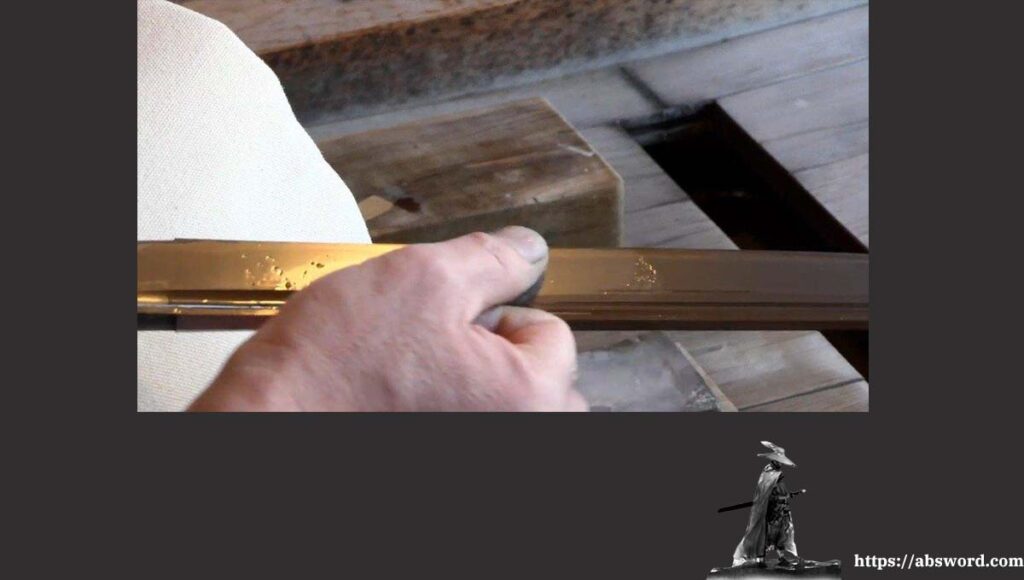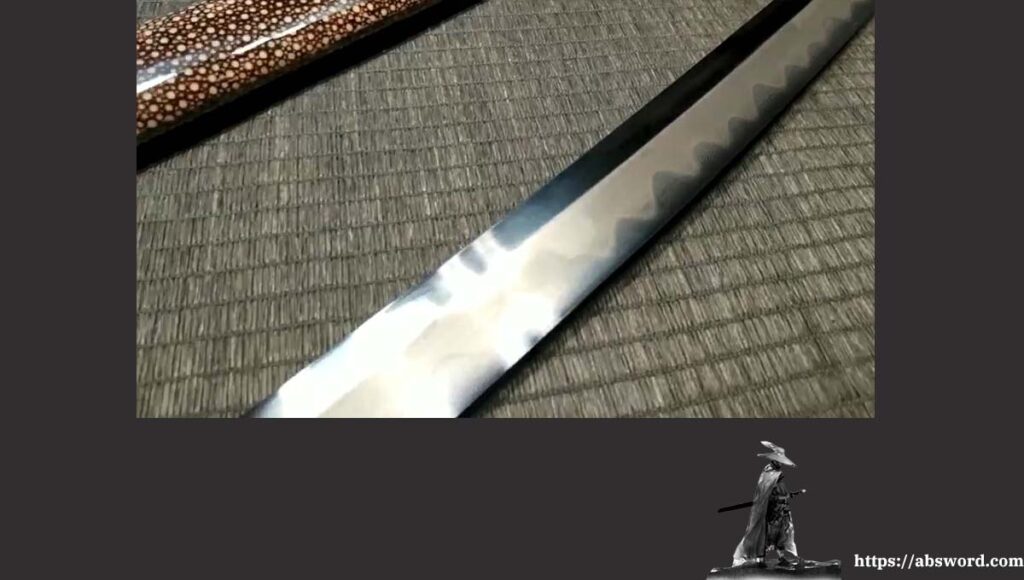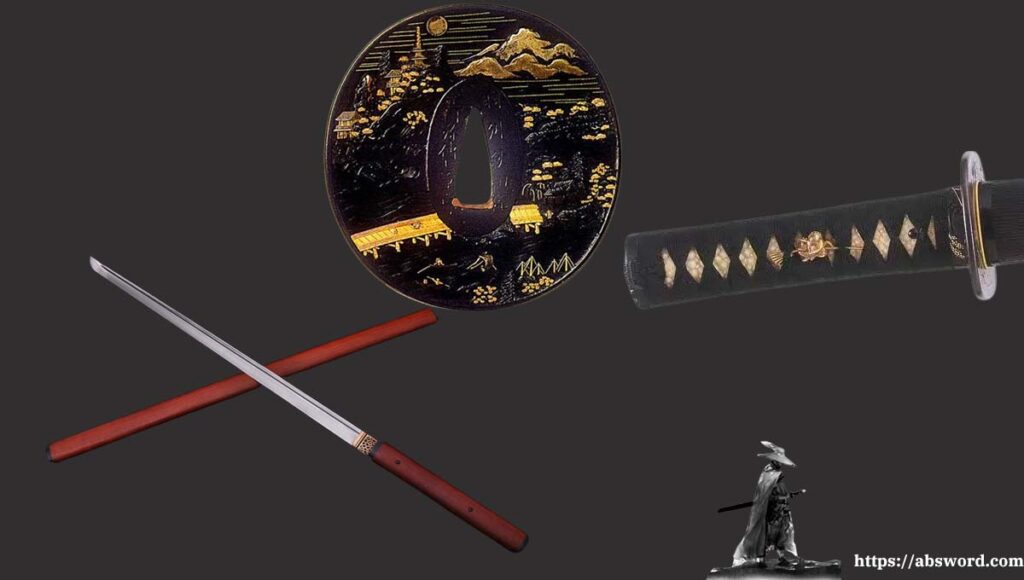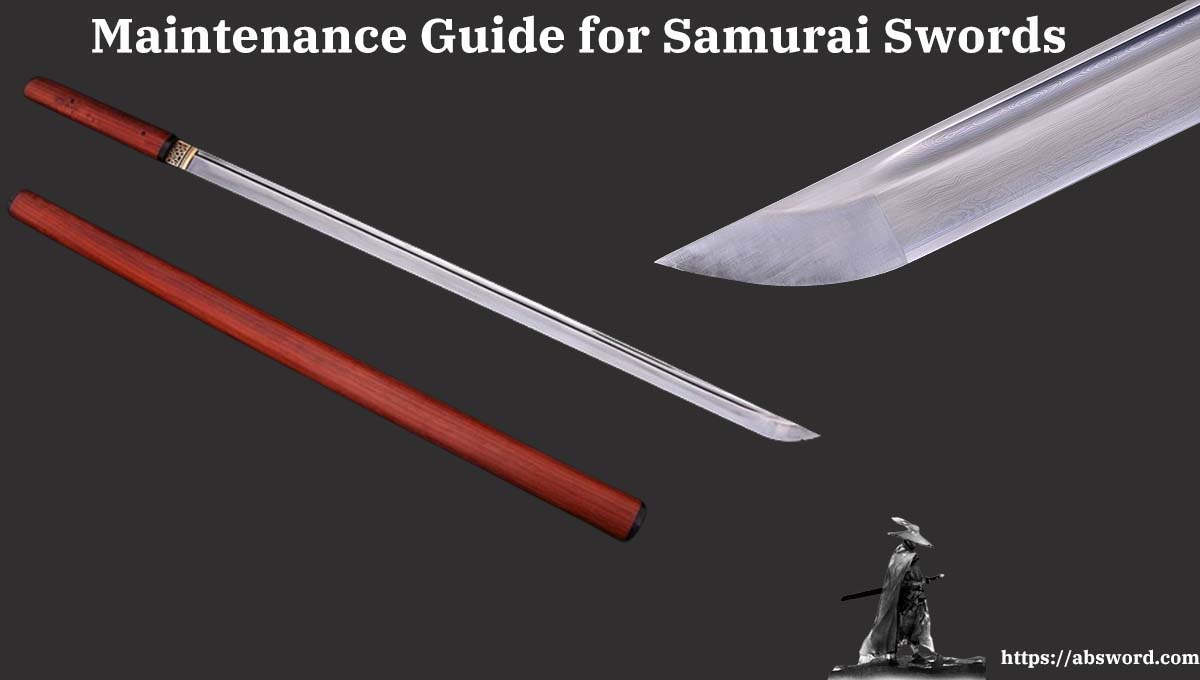1. Introduction
The samurai sword, as a weapon combining strength and aesthetic appeal, holds a significant place in history. It is not only revered by weapon enthusiasts and collectors but also cherished as a treasure in the hearts of many. Its unique design, exquisite craftsmanship, and profound cultural heritage make it truly captivating. However, to ensure a lasting affection and to keep the samurai sword shining through the passage of time, the correct maintenance methods become crucial. In this article, we present the most comprehensive ways to care for and appreciate this precious weapon, allowing it to maintain its original charm despite the trials of time.
Every samurai sword carries memories of history, symbolizing the spirit of warriors and serving as a cultural gem in Japanese heritage. Due to this significance, many individuals hold deep emotions towards samurai swords, regarding them as valuable collectibles. However, this love requires careful and patient nurturing to keep the sword radiant. Maintaining a samurai sword is not just a responsibility; it is a form of respect and legacy for its cultural value.

2. Regular Cleaning
The maintenance of a samurai sword begins with regular cleaning. Gently wipe the blade with a clean, soft cloth to remove surface dust and stains. For stubborn stains, a mild soap solution or dedicated cleaner can be used. However, it is crucial to avoid using overly harsh chemical cleaners to prevent damage to the blade.
When cleaning the blade, pay special attention to the edge. Wipe along the direction of the blade with a soft cloth to remove any accumulated dirt or rust. The blade is the core part of the samurai sword and must be handled with care to avoid scratches or damage.
Additionally, the handle and scabbard also require regular cleaning. Use a small brush or cotton swab to clean the crevices and details on the handle, ensuring no dust or dirt accumulates. The scabbard can be gently wiped with a damp cloth to remove surface stains and grease.
Regular cleaning not only maintains the appearance of the samurai sword but also prevents the formation of stains and corrosion. Moreover, the cleaning process is an opportunity to establish an emotional connection with the sword, allowing for a deeper understanding and appreciation of this ancient cultural heritage.
Remember to air-dry the sword and store it properly after cleaning. Avoid prolonged exposure of the blade to moisture to prevent rusting. Also, ensure the storage environment is dry, well-ventilated, and free from humidity to prevent damage to the weapon.
Regular cleaning is the foundational step in samurai sword maintenance. However, each sword has its unique characteristics, so extra care and attention are required during the cleaning process. This approach can extend the sword’s lifespan and keep it in good condition.

3. Blade Maintenance
The blade is a crucial part of the samurai sword, and maintaining its sharpness is vital for both performance and appearance. Here are some blade maintenance methods:
Regular Sharpening
Use suitable sharpening tools, such as a sharpening stone or sharpener, and follow the correct sharpening techniques. Pay attention to angles and pressure to ensure even sharpness of the blade.
Avoiding Misuse
Try to avoid using the samurai sword for inappropriate activities, such as chopping hard objects or using it for unintended purposes. This can reduce blade wear and damage.
Proper Usage
When using the samurai sword, pay attention to the correct techniques and posture, avoiding unnecessary pressure and bending of the blade.
Rust Prevention
After each use, wipe the blade with a clean cloth and apply a thin layer of rust-resistant oil or lubricant to prevent rust.
Storage Protection
When storing the samurai sword, use rust-resistant fabric or rust inhibitors inside the scabbard to protect the blade.
By employing proper blade maintenance, you can maintain the sharpness and performance of the samurai sword, making it more efficient and safe to use. Additionally, regular maintenance prolongs the blade’s lifespan, ensuring your samurai sword remains in good condition. Remember to handle blade maintenance with care to avoid accidents. If uncertain about sharpening or other maintenance steps, it’s advisable to consult professional swordsmiths or weapon experts.

4. Storage and Display
Safe Storage
Store the samurai sword in a dedicated sword rack or scabbard, ensuring stability and preventing accidental falls. Avoid placing the sword randomly in collision-prone areas.
Moisture Avoidance
Choose a dry and well-ventilated storage location, avoiding the impact of a humid environment on the blade. Use desiccants or dehumidifiers to control storage humidity.
Regular Inspection
Regularly inspect the blade, handle, and scabbard for signs of damage or looseness. Repair or replace damaged components promptly to ensure the integrity of the samurai sword.
Cleaning Sword Rack and Scabbard
Maintain the cleanliness of the sword rack and scabbard by wiping them with a clean cloth to remove dust and stains. Lubricate the moving parts of the scabbard regularly to ensure smooth usage.
Display Precautions
If you plan to display the samurai sword, ensure the display location is safe and stable. Use suitable stands or display racks to highlight the aesthetic and value of the samurai sword.
Proper storage and display methods not only protect the samurai sword from damage but also showcase its unique charm. Simultaneously, this demonstrates respect for and continuity of the samurai sword culture.

5. Avoiding Collisions and Damage
Handle with Care
When using and transporting the samurai sword, handle it with care to avoid severe collisions. Pay special attention to avoiding the blade contacting hard objects, especially when in contact with other items.
Safe Carrying
If you need to carry the samurai sword, use a dedicated scabbard or packaging to protect the blade. Ensure the scabbard or packaging provides sufficient protection against collisions and damage.
Preventing Falls
Try to avoid the samurai sword falling from heights or sudden impacts, as this may lead to blade bending, handle damage, or other irreversible damage.
Careful Usage
During swinging or practice, be mindful of the surrounding environment, avoiding collisions with other objects or people. Ensure there is sufficient space and a safe environment to operate the samurai sword.
Avoiding collisions and damage is a crucial aspect of protecting the samurai sword. Handling the sword with care can extend its lifespan and maintain its good condition.
6. Rust Prevention
Rust prevention is a key step in samurai sword maintenance. Here are some effective rust prevention methods:
Cleaning and Drying
After each use, promptly clean the sword’s body and ensure it is completely dry. Moisture is one of the main factors causing rust.
Rust-resistant Oil or Lubricant
Regularly apply a layer of rust-resistant oil or lubricant to the sword’s body. This forms a protective film, preventing moisture and oxygen in the air from contacting the blade.
Storage Environment
Store the samurai sword in a dry and well-ventilated place, away from damp areas. Use desiccants or dryers to control the storage environment’s humidity.
Regular Inspection
Regularly check the sword’s body for signs of rust. If any rust spots are found, deal with them promptly to prevent further spread.
Rust Removal Methods
If rust spots appear on the blade, gently sand them off with sandpaper. Then proceed with rust prevention to avoid the reappearance of rust.
Rust prevention not only protects the appearance of the samurai sword but also prolongs its lifespan. By taking appropriate rust prevention measures, you can ensure that the samurai sword remains in good condition.
7. Professional Maintenance and Repair
For complex maintenance and repair work, seeking professional help is advisable. Here are some suggestions for professional maintenance and repair:
Regular Inspection and Maintenance
Regularly take the samurai sword to a professional swordsmith or weapon maintenance expert for inspection and maintenance. They can identify potential issues and carry out timely repairs.
Damage Repair
If the blade, handle, or other parts are damaged, professional repairers can handle the restoration work. They possess the knowledge and skills required to restore the samurai sword to its original state.
Blade Sharpening
If the blade requires fine sharpening or repair, professional swordsmiths can perform this task. They can ensure the correct maintenance of the blade’s sharpness and shape.
Custom Maintenance Plan
Collaborate with professionals to create a personalized maintenance plan based on the sword’s frequency of use and specific circumstances. This ensures that your samurai sword receives appropriate attention and care.
Professional maintenance and repair can guarantee the quality and value of the samurai sword. Working with professionals allows you to receive the best advice on maintenance and repair, ensuring the long-term preservation and use of your valuable samurai sword. Remember to choose experienced and reputable professionals to handle your precious sword.
8. Heritage and Respect
The samurai sword is not just a weapon but also a legacy of culture and history. During the maintenance and use of the samurai sword, it is essential to approach it with a mindset of respect and reverence.
Understanding History and Culture
Delve into the history and cultural background of the samurai sword, understanding its importance and significance in traditional Japanese culture.
Passing on Skills
If the opportunity arises, learn the techniques and maintenance methods of the samurai sword. Pass on this skill to contribute to its continuity.
Respecting the Sword’s Personality
Each samurai sword has its unique personality and characteristics. Respect its uniqueness and refrain from attempting to alter its original form and style.
Sharing and Communication
Share experiences and knowledge with other samurai sword enthusiasts. Join relevant communities or activities to enhance understanding and love for the samurai sword.
Educating the Next Generation
Impart the importance of respect and maintenance of the samurai sword to the younger generation. Cultivate their awareness of protecting cultural heritage.
Through heritage and respect, we can better appreciate the charm of the samurai sword and pass on its cultural value to future generations. Maintaining the samurai sword is not only about weapon preservation but also about cherishing history and tradition. Let us approach each samurai sword with reverence, allowing them to continue shining brilliantly through the passage of time.
9. Safety and Responsibility
During the maintenance and use of the samurai sword, safety is of utmost importance. Here are some key points about safety and responsibility:
Understanding Laws and Regulations
Before owning and using a samurai sword, understand local laws and regulations to ensure legal and compliant behavior.
Safe Usage Environment
Choose a safe environment for sword usage, avoiding swinging the samurai sword in crowded or hazardous areas. Ensure there are no fragile items or other potentially dangerous factors nearby.
Correct Usage Methods
Learn and master the correct usage methods of the samurai sword, following professional guidance or coach advice. This includes proper gripping, swinging, and sheathing techniques.
Avoiding Dangerous Behavior
Do not use the samurai sword for inappropriate actions, such as attacking others or engaging in risky performances. Always prioritize safety and responsibility.
Educating Others
If sharing experiences with others, emphasize the importance of safety and responsibility, teaching them the correct usage and maintenance methods.
Maintaining the samurai sword is not only about respecting the weapon but also about being responsible for one’s safety and the safety of others. By adhering to safety rules and taking responsibility, we can create a safe and respectful environment, fully enjoying the pleasure and cultural value that the samurai sword brings.
10. Cultural Experience and Community Involvement
Joining Martial Arts Communities
Join local martial arts communities or clubs to interact with other samurai sword enthusiasts. This provides opportunities to share experiences, learn techniques, and participate in related activities and competitions.
Visiting Exhibitions and Museums
Visit exhibitions and museums dedicated to the samurai sword to gain in-depth knowledge about its history, culture, and craftsmanship. This enriches your understanding and appreciation of the samurai sword.
Attending Workshops and Seminars
Participate in workshops and seminars focused on the samurai sword to learn advanced techniques and maintenance methods. This is an excellent opportunity to exchange ideas and learn from professionals.
Supporting Traditional Craftsmanship
If possible, support traditional samurai sword craftsmanship and artisans. Purchase authentic samurai swords and pay attention to the production process and cultural significance behind them.
Cultural Inheritance
Pass on your love for the samurai sword to others, especially the younger generation. Help them understand and appreciate the importance of samurai sword culture through education and sharing.
Through cultural experiences and community activities, you will immerse yourself more deeply in the world of the samurai sword. Collaborating with other enthusiasts will help safeguard and continue the precious cultural heritage. Such interactions and exchanges will enrich your experience and contribute to the ongoing development of samurai sword culture.

